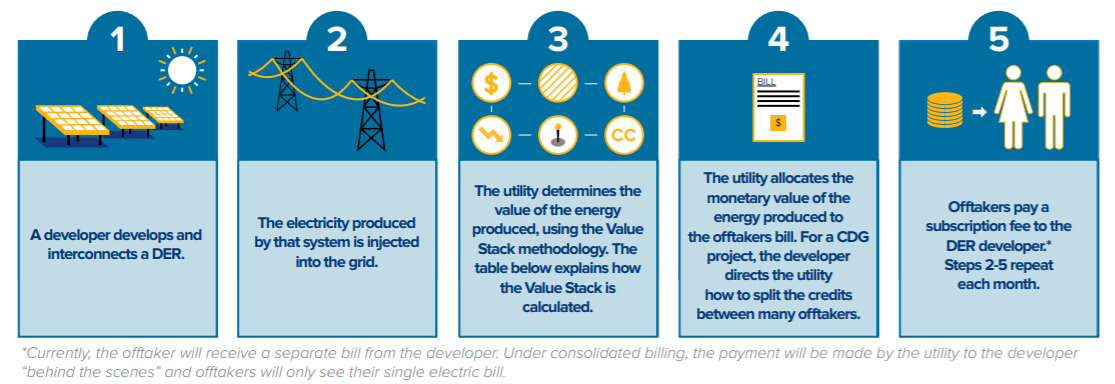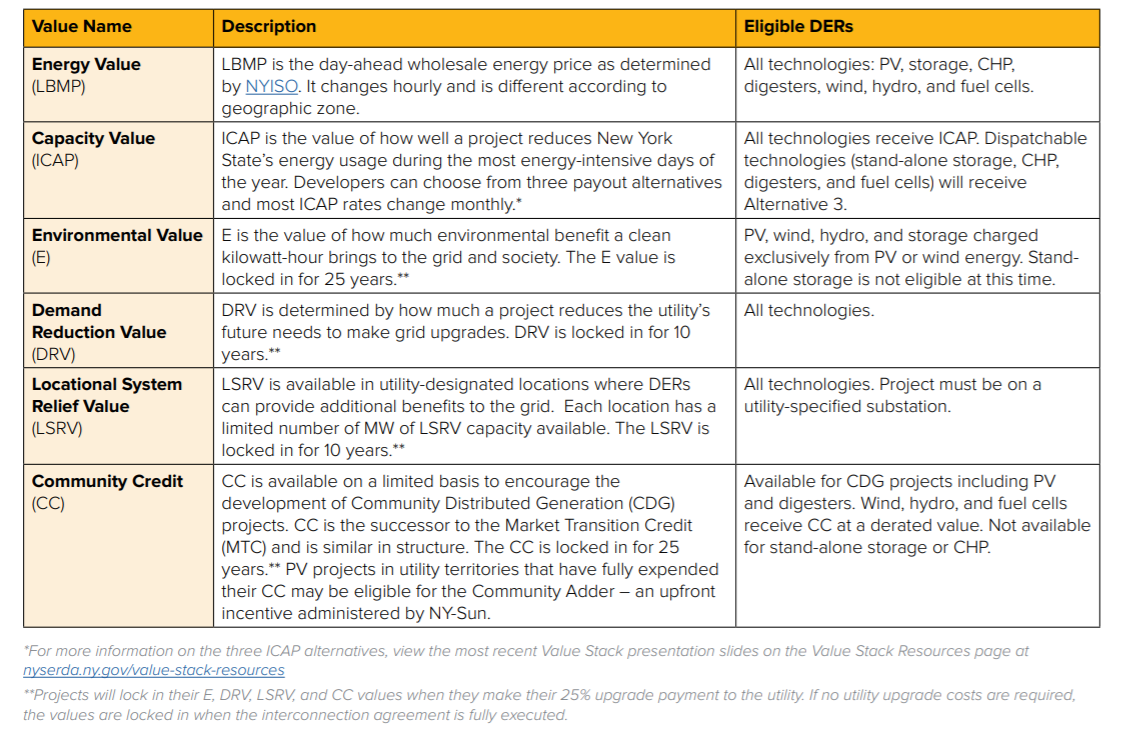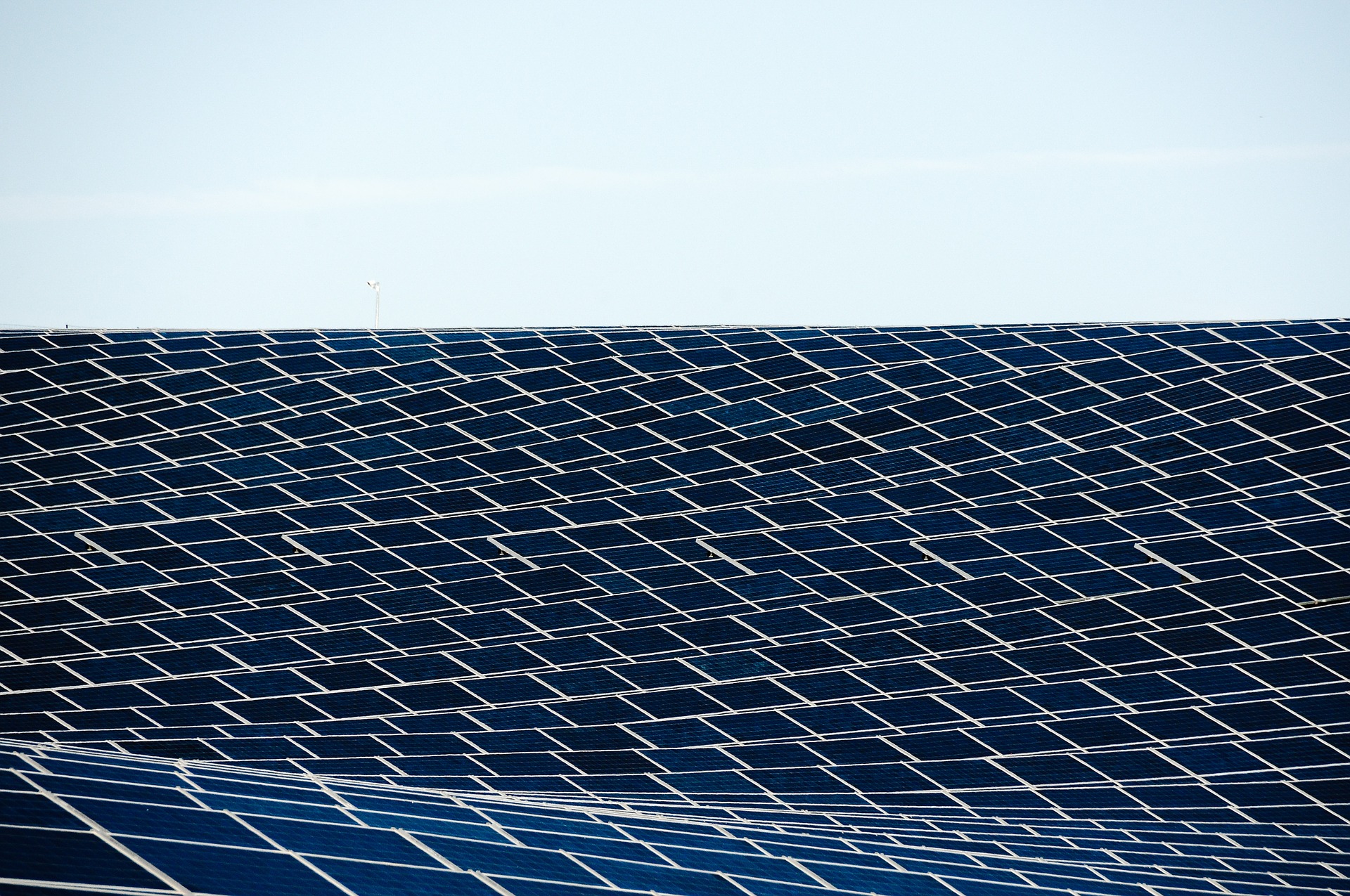The Value of Distributed Energy Resources, commonly referred to as VDER, is a method of compensation used for energy created by distributed energy resources, known as DERs. The Value Stack falls under the VDER umbrella and compensation is delivered in the form of bill credits. The calculation of of this compensation is determined by a number of different factors relating to the DER in question, including:
- Energy Value
- Capacity Value
- Environmental Value
- Demand Reduction Value
- Locational System Relief Value
This Value Stack method of calculating compensation is applicable to onsite nonresidential projects greater than 750 kilowatts AC, as well as remote metered projects—including those using a Community Distributed Generation (CDG) configuration.
Eligible technologies for the Value Stack include the following:
- Solar Photovoltaics (PV)
- Stand-alone/Co-located Energy Storage
- Certain Types of Combined Heat and Power (CHP)
- Anaerobic Digesters
- Wind Turbines
- Small Hydro
- Fuel Cells
How the Value Stack Works
Essentially, the utility uses the Value Stack to calculate the value of energy produced by an interconnected DER. The monetary value of this generated energy is then applied to the offtaker’s energy bill, giving a proportionate bill credit which saves the offtaker money. For this service, the offtaker pays a monthly subscription fee to the energy developer responsible for the development and connection of the DER. This cycle then continues on a month-by-month basis, wherein the offtaker receives a bill credit for the energy generated by their subscribed portion of the CDG project, and pays a subscription fee to the developer. The graphic below, courtesy of NYSERDA, outlines the Value Stack calculation and compensation process across five steps.
The Development of the Value Stack
The Value Stack is the new compensation model being adopted by New York as the state moves away from the previous net metering model. In developing VDER and the Value Stack methodology, input was sought from utilities, developers, and stakeholders to ensure that the model is a fair method of compensation. For energy consumers/offtakers with a project subscription, compensation comes in the shape of a monetary credit applied to their electric bill.
How the Value Stack is Calculated
The table below, again courtesy of this informative document from NYSERDA, outlines the methodology behind Value Stack calculation, taking all the relevant factors into consideration.
NYSERDA suggests the following resources for those looking to learn more about VDER and the Value Stack. Just click the links for more information.
- The Solar Value Stack Calculator
- Stand-alone Storage Value Stack Calculator
- Value Stack Historic Data and Rates
To learn more about VDER, the Value Stack, and New York solar energy in general, get in touch with YSG Solar today. Send us an email, or call at 212.389.9215 and we will guide you through the entire process of going solar, ensuring maximum savings for every project.
YSG Solar is a project development vehicle responsible for commoditizing energy infrastructure projects. We work with long-term owners and operators to provide clean energy assets with stable, predictable cash flows. YSG's market focus is distributed generation and utility-scale projects located within North America.
Sources:
All information in this blog post is courtesy of the below document from NYSERDA.
https://www.ysgsolar.com/sites/default/files/value-stack-overview_1.pdf

